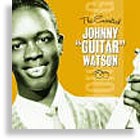FEATURES
KENNY WAYNE SHEPHERD
The Place He’s In
Lauded as a guitar prodigy when he hit in ’95, comparisons to legends were inevitable. But labels rarely fit an artist “in transit,” and his new album finds him reinventing himself as a rock player/singer. By Wolf Marshall
JIMMY JOHNSON
The Guitar Sound of The Shoals
A fixture at the Fame and Muscle Shoals studios since their beginnings, he has participated in dozens of legendary recordings, working with everyone from gospel artists to the Rolling Stones. By Willie G. Moseley
MARTIN STYLE 000-28K
In the ’20s and ’30s, the majority of Koa instruments built by Martin were ukuleles. A few Koa guitars were made, mostly 0-18 and 0-28 models. And although Martin literature didn’t show any 000 Koa instruments, at least two exist. By George Gruhn
BASS SPACE
1968 Custom Kraft Bone Buzzer
Valco was in a spiral when the Bone Buzzer appeared; the oddball amongst the big manufacturers, it created weird instruments and bizarre “innovations,” some of which appeared on this bass. By Willie G. Moseley
1980 OVATION UKII 1291
Despite real innovations, radical shapes, and quality products, Ovation couldn’t leverage its achievements with bowl backs and pickup systems into the solidbody market. But to the end, as with this guitar, it never stopped trying. By Michael Wright
THE DIFFERENT STRUMMER
What‘s In a Name?
The terms “plectrum” and “tenor” denote specific forms of instruments. But they derive from a fluid period in history when three instruments collided to produce the modern guitar and banjo worlds. By Michael Wright
DEPARTMENTS
Dealer News
Vintage Guitar Price Guide
Builder Profile
Wechter Guitars
Upcoming Events
Vintage Guitar Classified Ads
Dealer Directory
Readers Gallery
FIRST FRET
Reader Mail
News and Notes
Fender Acquires Tacoma, Paisley Scores Jorgenson Axe, U.K. Stratocaster Festival, Stolen Gear, In Memoriam, more!
The VG Hall of Fame ’04
Cast Your Vote, Win a Prize!
Executive Rock
Another Nipper Moment
By Willie G. Moseley
B>Danny Gatton
Ten Years Past and Still Dropping Jaws
By Ralph Heibutzki
Internal Void
Maryland Doom Rockers Release Third CD
By Ken Johnson
Sad To See You Go
Johnny Ramone: 1948-2004
By Dan Forte
Rob McNelley
By John Heidt
The Reverend Horton Heat
Bringin’ It Home for a Revival
By D.J. Johnson
COLUMNS
Q&A With George Gruhn
Acousticville
Thoughts on Turning Chinese
By Steven Stone
FretPrints
Merle Travis
By Wolf Marshall
Gigmeister
The Roland VGA-5
By Riley Wilson
Guitars With Guts
The Sinopoli Model
By R.E. Bruné
TECH
Dan’s Guitar Rx
Fixing “Tuffy,” Part II
By Dan Erlewine
Guitar Shop
Guerilla Guitar: Build a Budget Slide
By Tony Nobles
Amps
Buying a Vintage Amp?
By Gerald Weber
Ask Gerald
By Gerald Weber
REVIEWS
The VG Hit List
Music, Book and Video Reviews: SRV, Page and Plant, Bill Monroe, Chris Whitley, Keb’ Mo’, Hadden Sayers, Boz Scaggs, Bass Culture: The John Entwisle Collection, more!
Check This Action
Unsung Guitar Heroes
Dan Forte
Vintage Guitar Gear Reviews
Zemaitis S22 Metal Top, E-H 16 Second Digital Delay, H.B.E. Power Screamer and Compressor Retro, Effector13 Improbability Drive,
Gearin’ Up!
The latest cool new stuff!

